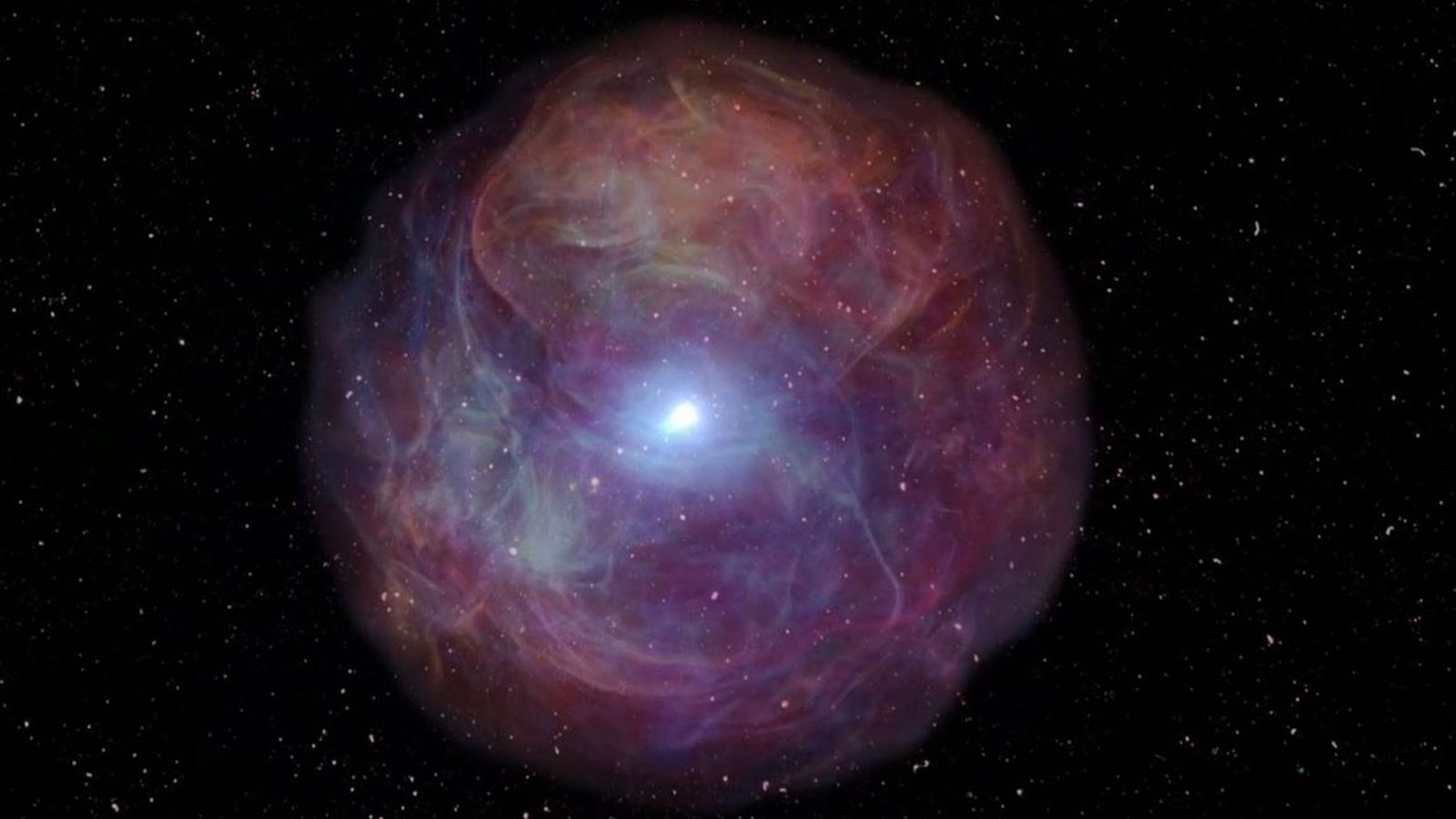Astronomers have for the first time imaged the last moments in the life of a red supergiant star.
It was spotted just 130 days before exploding using two telescopes in Hawaii, allowing a team of researchers to survey it before it detonated in an enormous supernova.
“This is a breakthrough in our understanding of what massive stars do moments before they die,” said Dr Wynn Jacobson-Galán, lead author of the study.
“Direct detection of pre-supernova activity in a red supergiant star has never been observed before in an ordinary Type II supernova.
“For the first time, we watched a red supergiant star explode!” added Dr Jacobson-Galán.
Scientists figure out when red supergiant Betelgeuse will go supernova
What did we learn?
You talkin’ to me? Dogs can identify different languages, study finds
Sony reveals virtual reality gaming system for PS5 and new VR Horizon game
COVID-19: Babies born during first year of pandemic have lower developmental scores
The discovery, which took place in the summer of 2020 before the supergiant exploded that autumn, has been detailed in a study published in The Astrophysical Journal.
Using the Keck Observatory’s Low Resolution Imaging Spectrometer (LRIS) the team found dense circumstellar material surrounding the star at the time it exploded.
The researchers believe this is the same gas that had initially alerted them to the red supergiant with a blast of bright radiation in the summer.
They say the discovery reveals new details about how red supergiants evolve just before going supernova – as previously observed supergiants didn’t show any evidence of violent eruptions (such as the one that alerted them to this star’s existence) before exploding.
As the team was able to observe this star for so long they have learned that red supergiants “undergo significant changes in their internal structure that then results in the tumultuous ejection of gas moments before they collapse”.
The discovery means that other telescopes conducting transient surveys will be able to hunt for similar types of luminous radiation which could signal other imminent supernovas.
“I am most excited by all of the new ‘unknowns’ that have been unlocked by this discovery,” said Dr Jacobson-Galán.
“Detecting more events like [this] will dramatically impact how we define the final months of stellar evolution, uniting observers and theorists in the quest to solve the mystery on how massive stars spend the final moments of their lives.”
What are red supergiants?
Red supergiants are the biggest stars in the universe in terms of volume although they are not the most dense nor the brightest stars in the sky.
They are created when a moderately massive star has burned through the hydrogen at its core and begins to undergo helium fusion, which is where heavier elements such as carbon and iron originate from.
However hydrogen fusion continues in the outer shells causing the star to expand – and as it surface area grows it ends up getting cooler.
Heavier and heavier elements begin to fuse within the core of a red supergiant until, astronomers believe, it builds up a core of iron which cannot sustainably undergo nuclear fusion – causing the star to explode.






















